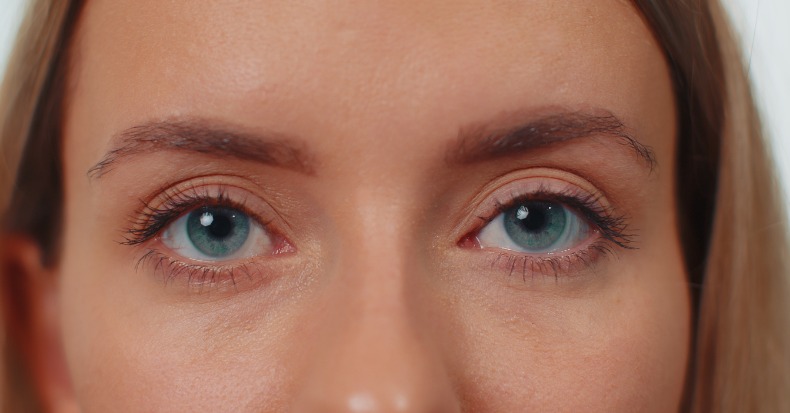Whiplash associated disorder (WAD) has been known to affect nerve function, which can manifest as several symptoms, including visual problems. If the initial chiropractic examination reveals altered ocular function, the patient’s chiropractor may recommend a variety of eye-specific exercises to aid in the healing process.
-
- Blinking: When using a screened device, blinking essentially rests the eyes, which reduces eye strain and keeps them lubricated. Not only does this help prevent dry eye, but it can prolong focus. Try blinking for 10 seconds (1 rep/second) every 20 minutes of screen time. Also, focus on a far-off object for 20 seconds every 20 minutes when working at the computer.
- Eye movements: Slowly move your eyes up and down three times; then move them left to right three times and then shut your eyes and rest for 15-30 seconds.
- Figure-8: Imagine a large poster about 8-10 ft away that features two 8s, one upright and one on its side. Starting with the upright 8, move your eyes tracing the path of the 8 for about 30 seconds and reverse the direction. Repeat the same with the sideways 8. Blink/rest as needed. If needed, start with 5-10 seconds and work up to 30 seconds.
- Focus: Hold a finger or sharp pencil a few inches out in front of your eyes (in a well-lit room), and focus on the tip for a few seconds. Then focus on a far-off object until it comes into focus. Return to your finger/pencil and repeat this five-to-ten times, gradually increasing the repetitions (blink/rest as needed).
- Convergence: Holding your thumb or a pencil upward with your outstretched arm, slowly bring the thumb/pencil closer to the bridge of your nose (equally between the eyes) until you see two. Then move it back until only one thumb/pencil reappears. Slowly repeat the loss and gain of one object five-to-ten times, again respecting fatigue and/or other irritating symptoms (light headedness, dizziness, pain, etc.). Be patient and work slowly but purposefully.
Not only can these exercises benefit the WAD patient with ocular dysfunction, but they can also help those with digital eye strain, photophobia (increased sensitivity to light), post-surgical balancing of the ocular muscles, focus problems, convergence insufficiency (inability to cross the eyes), and lazy eye (often seen in kids).
Thousands of Doctors of Chiropractic across the United States and Canada have taken "The ChiroTrust Pledge":
“To the best of my ability, I agree to
provide my patients convenient, affordable,
and mainstream Chiropractic care.
I will not use unnecessary long-term
treatment plans and/or therapies.”
To locate a Doctor of Chiropractic who has taken The ChiroTrust Pledge, google "The ChiroTrust Pledge" and the name of a town in quotes.
(example: "ChiroTrust Pledge" "Olympia, WA")
Content Courtesy of Chiro-Trust.org. All Rights Reserved.

